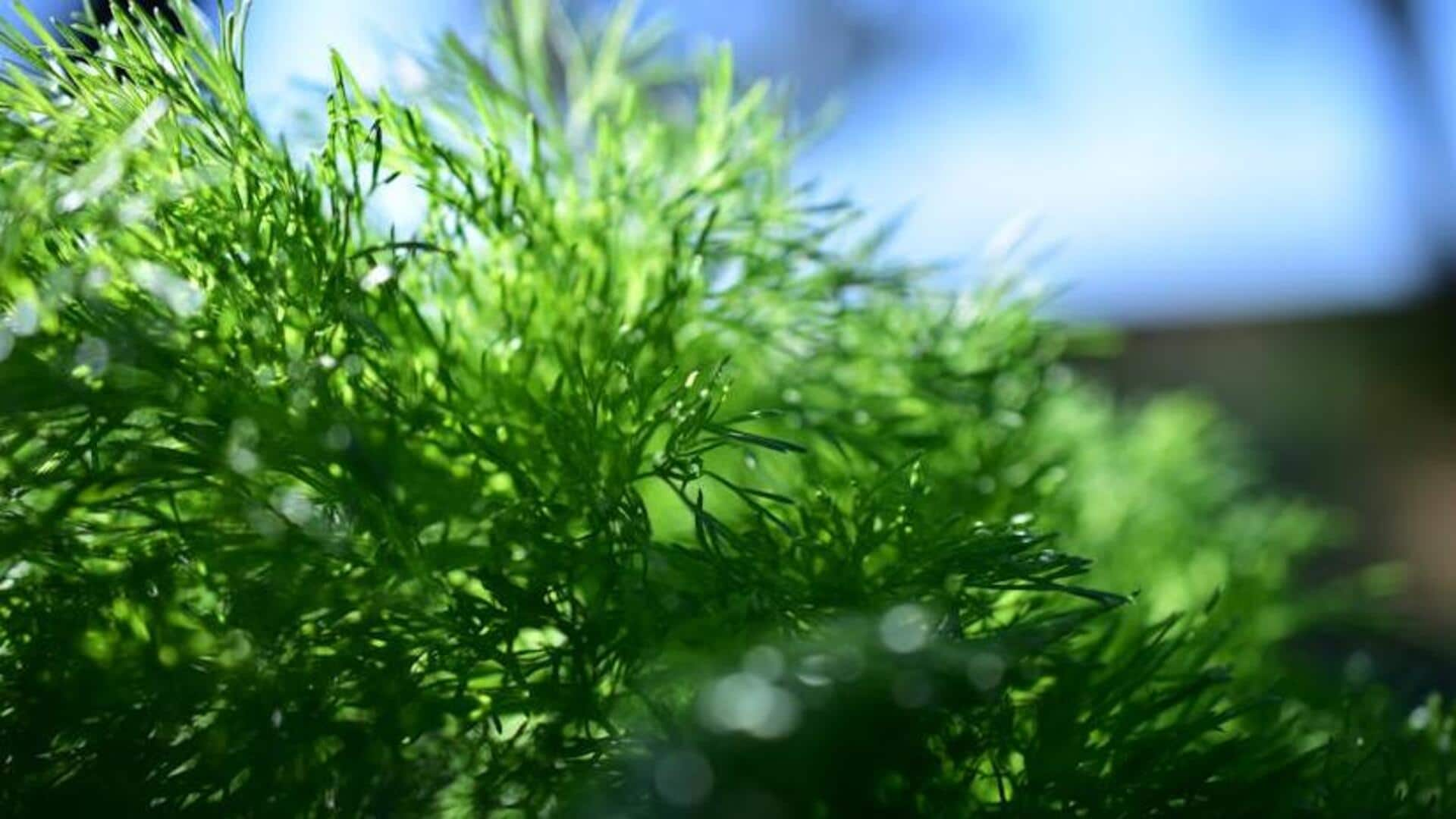
Growing dill made easy—here's a simple guide
What's the story
Growing dill indoors adds a burst of fresh flavor to your kitchen, perfect for cooking enthusiasts.
This herb, known for its feathery leaves and distinctive taste, thrives in small indoor gardens with the right care.
This guide provides essential tips for successfully growing dill at home, guaranteeing a constant supply of this aromatic herb for your culinary adventures.
Container choice
Selecting the right container
Choosing the correct container is crucial for growing dill indoors.
Its roots are longer compared to most herbs, so select a pot that's minimum 12 inches deep to ensure adequate room for root development, which is vital for health and yield.
The container should have drainage holes to prevent waterlogging and root rot.
Soil & Feed
Ideal soil and fertilization
Dill thrives in well-drained soil rich in organic matter. For indoor conditions, a mixture of potting soil with a bit of compost is ideal.
As for fertilization, dill doesn't need heavy feeding. Still, a balanced liquid fertilizer applied once a month during the growing season will encourage healthier growth.
Be careful not to over-fertilize as it can lead to less flavorful growth in the plant.
Lighting needs
Optimal lighting conditions
Light is the secret sauce to growing dill indoors!
This sun-loving herb craves a good six to eight hours of direct sunlight every day.
If your house doesn't get enough natural light, use grow lights! Position them roughly two feet above your plants and keep them on for 10-12 hours each day.
Enough light will make your dill grow nice and tall without getting leggy.
Watering wisely
Watering techniques
Dill likes to be kept evenly moist but hates waterlogged soil.
Water when the top inch of soil feels dry to the touch.
It's best to water deeply and less frequently than to do a little and often, as it promotes root growth and stability in plants.
Overwatering or letting the soil dry out completely can cause stress and stunt the plant's growth.
Harvest time
Harvesting your dill
Start picking dill leaves as soon as they're big enough to use, usually when plants are about eight inches tall.
For continuous harvest, regularly pick leaves, but be careful not to remove more than one-third of the plant's growth at a time. This helps avoid stressing the plant.
Freshly picked dill tastes the best, but you can also dry or freeze it for later use.